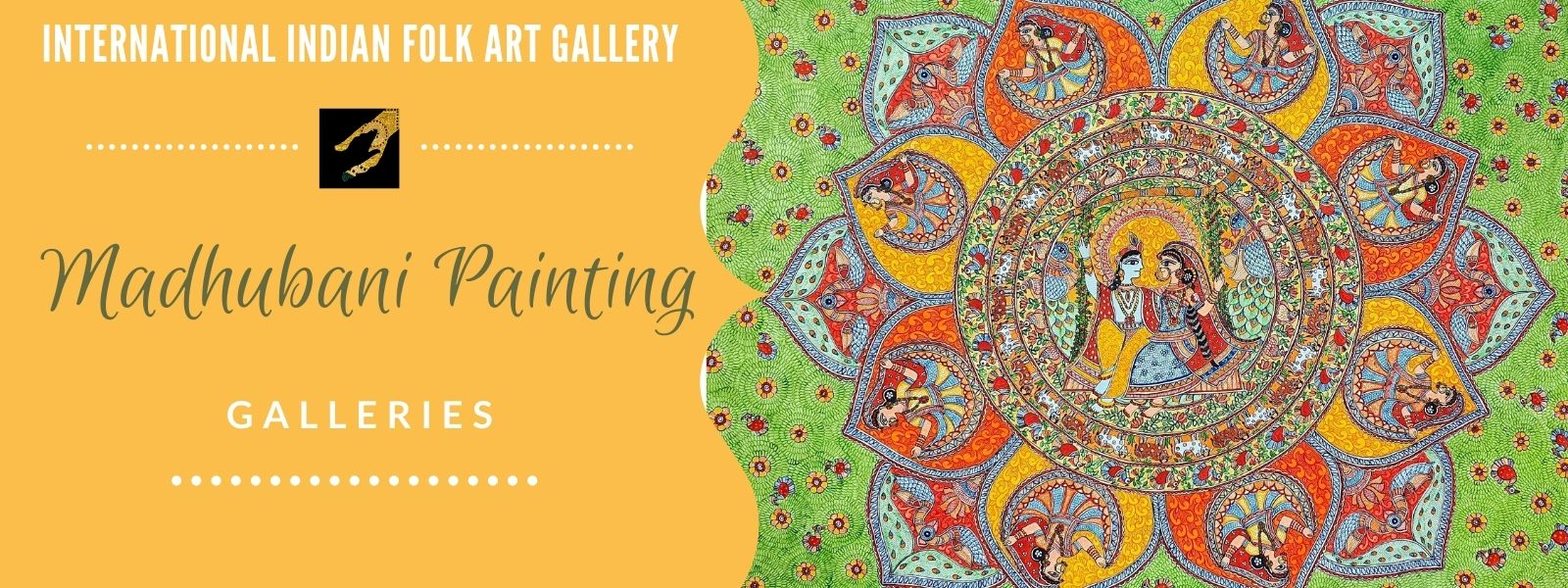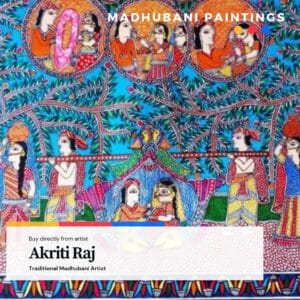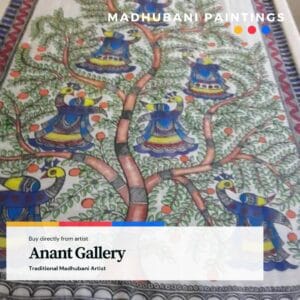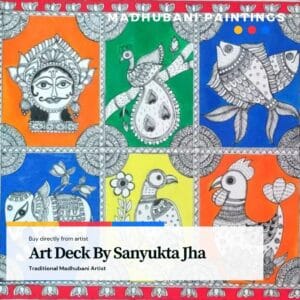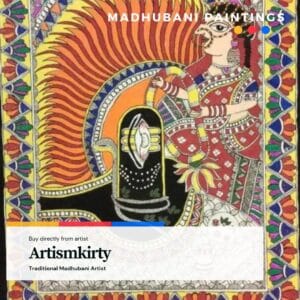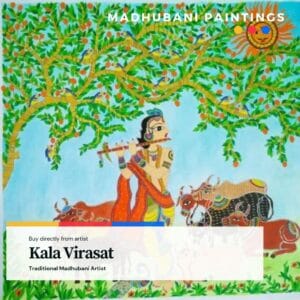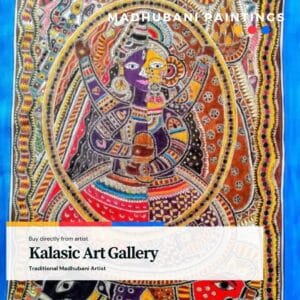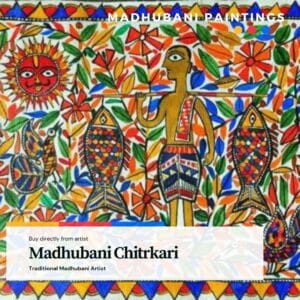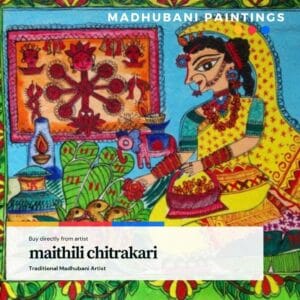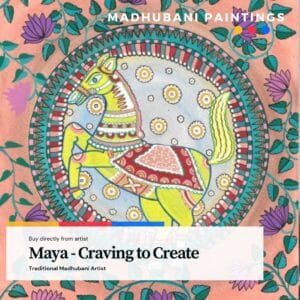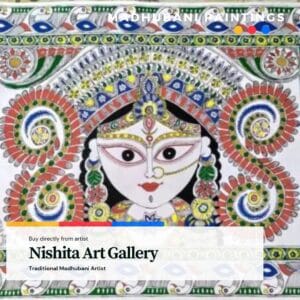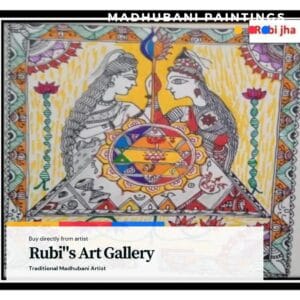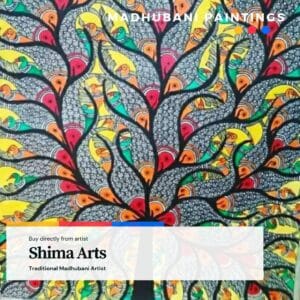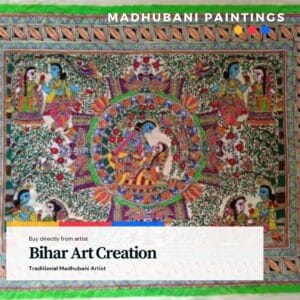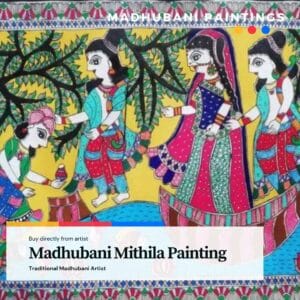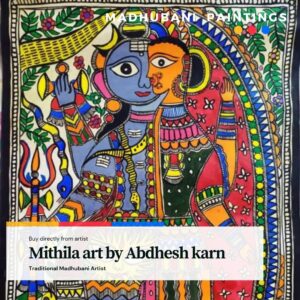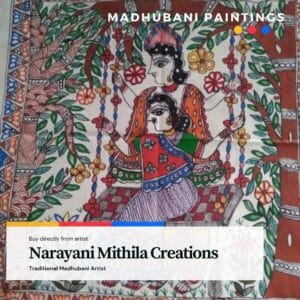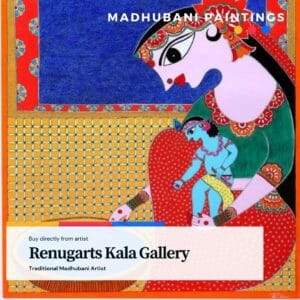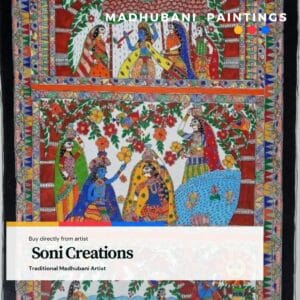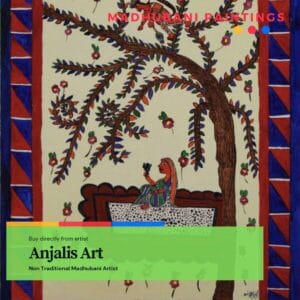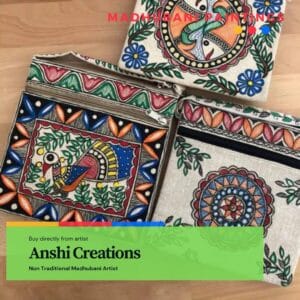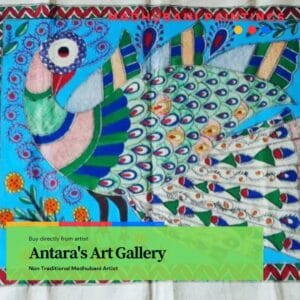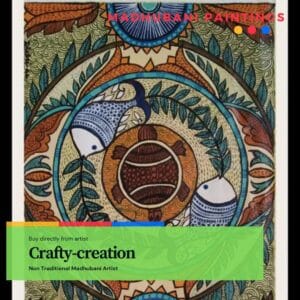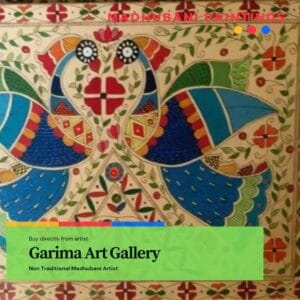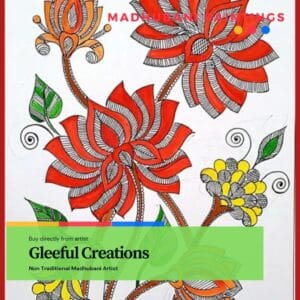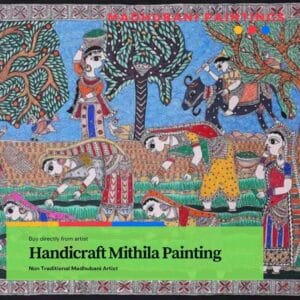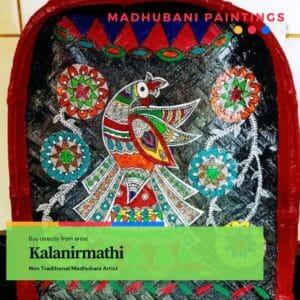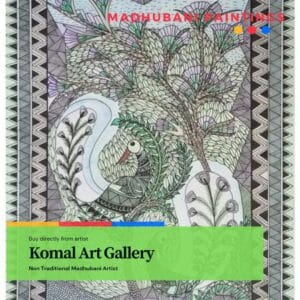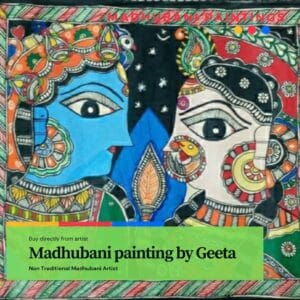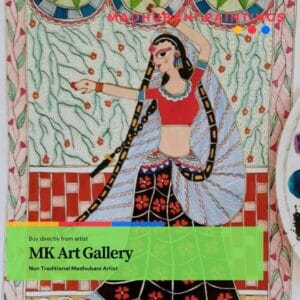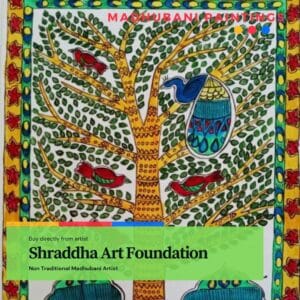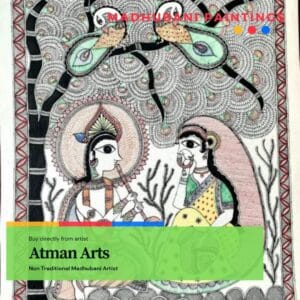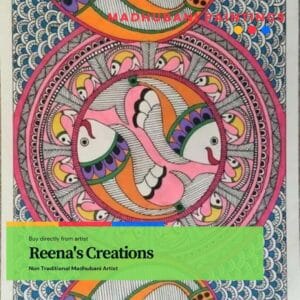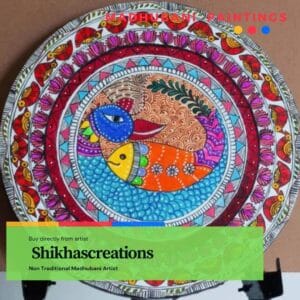Madhubani Painting
Madhubani painting, also known as Mithila painting is a traditional Indian folk art that uses geometric patterns, contrasting colors & line drawings.
Madhubani painting dates back to the time of Raja Janak, a king in a Mithila. He had a daughter named Sita who was married to Lord Ram. To celebrate her wedding, Raja Janak asked his subjects to decorate their city in beautiful ways.
In the recent years, artists have been painting murals with geometric patterns on walls all around the city. They depict some rituals of weddings, births and celebrations.
Historically, Madhubani painting was passed down from generation to generation in the family of Mithila Region. The five distinctive styles are Bharni, Kachni, Tantrik, Godna and Kohbar.
Madhubani paintings are always two-dimensional and come with no empty spaces, usually filled with drawings of flowers, animals, birds, and other geometric designs.
These paintings are traditionally produced on freshly plastered wall surfaces or floors of huts, but now they are also created on cloth, handmade paper or canvas. The paste required to make them usually contains powdered rice.
Madhubani painting is created with a variety of tools and naturally-made dyes. It features colourful geometric patterns which are pretty eye catching, so it’s easy for anyone to see.
Different cultural occasions & festivals often have their own associated rituals, such as Holi or Surya Shasti. Some of these can include Kali Puja, Upanayana and Durga Puja.
Madhubani paintings often depict scenes that reflect a connection to nature, god and goddess like Radha Krishna or religious ceremonies. Marriage is often depicted as a ritual called kanyadaan in India.
Natural objects like the sun, the moon, and tribal plants like tulsi are often painted in traditional art with scenes from daily life.
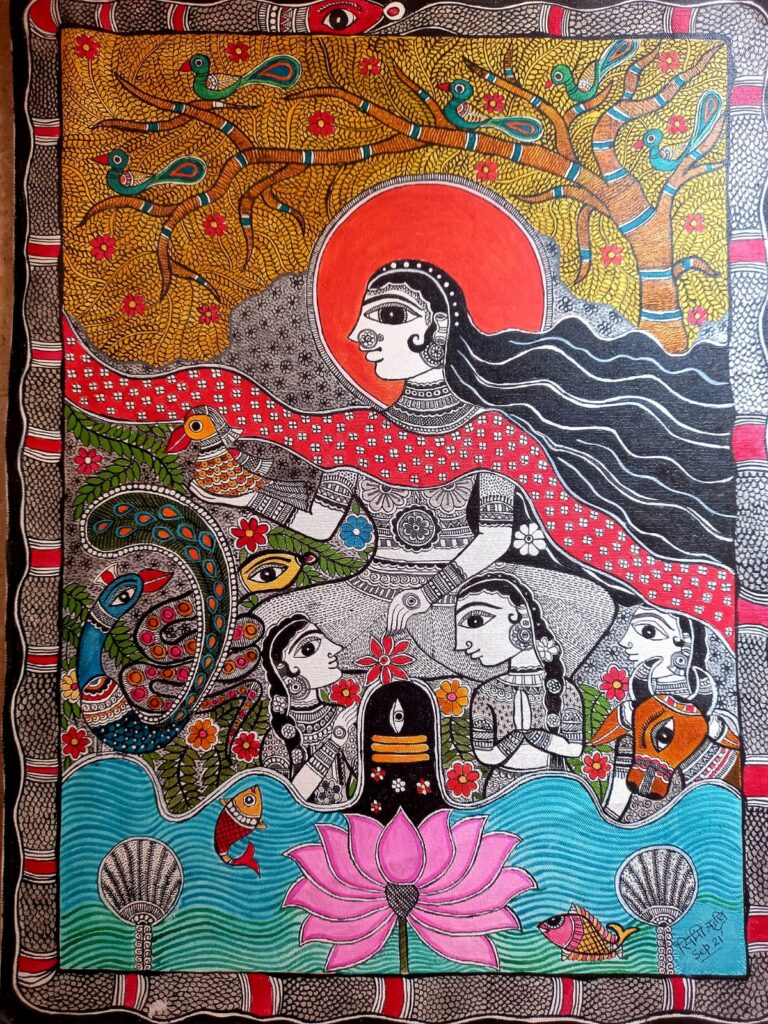
You’ll find wedding ceremonies in paintings alongside royal court scenes in most traditional work. There’s never a blank space left – it’s all filled up with flower paintings or other kinds of compliments to the previous work.

